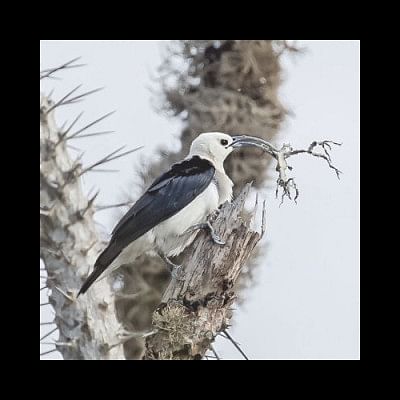Birds of Madagascar

Madagascar, an island in the Indian Ocean northeast of South Africa, broke off many million years ago from the giant merged continent called Gondwanaland. Being independent of the continents, life here evolved at its own pace. Thus, there is a large number of endemic species – that is, those that cannot be found elsewhere - of flora and fauna in Madagascar.
For birders Madagascar is attractive because, of the three hundred species of birds found here, one hundred and seven are endemic. Therefore, a trip to Madagascar offers the opportunity to see many birds not seen anywhere else.
Thus it was that my birder friends and I went to Madagascar with great anticipation. We were not disappointed.
The large island supports several types of ecosystems, including tropical rainforests, mountain and cloud rainforests, deciduous forests as well as an arid spiny forest. Each ecosystem supports its own set of birds some of which can only be found in a small region.
In the time allotted we decided to visit two regions: the rainforest at Perinet and the spiny forest in the south. We also spotted many birds in a lake in the center of the capital Antananarivo, Lake Tsorotsoa, which has been designated a Ramsar site for being a special wetland.
Our days in Madagascar went quickly, replete with the excitement of new species we had not seen before, and punctuated by lemurs, reptiles, insects and various exotic trees.
Over a month has elapsed since our trip, giving me time to reflect and ponder on what I saw.
I saw bird species very similar to our birds, but different enough to be their own species, and they gave me food for thought. For example, Madagascar magpie robins look exactly like our doels in colour and pattern. They even flick their tails like ours. But when I saw them something did not feel right. Of course! They were much smaller than our doels, an unsettling observation. Madagascar hoopoes look similar to ours, but their voice was different and they were also smaller. The Madagascar green pigeon looks like our horial (yellow-footed green pigeon) including similar black stripe patterns on its green wings. And this list goes for many other birds I have seen in Bangladesh.
How is it these species ended up like this? To me that is a mystery, this is the kind of mystery that evolutionary scientists try to solve.
On the other extreme, there the joy of spectacularly different birds: for example, the many species of the family coua, with a round blue circle over the eyes, looked like nothing I have seen, and the sickle-billed vanga was unforgettable.
Along with the joyous memories were some sad ones, which started even before we landed, for from the plane one can see how the land is denuded, the earth gouged out for mines and forests cut down for farmland. While a determined conservation movement has managed to save some forest land, much of the original forests of the island have been lost to development. Worse was the incursion of foreign species. We saw mile after mile of planted eucalyptus forests, which probably got there before anyone knew how bad the tree is for the environment. And despite its avian wealth, Madagascar's most common bird is the common myna.
Still, I doubt many places on earth would offer such an exciting and varied trip to nature lovers as Madagascar did to me and my friends.
www.facebook.com/ikabirphotographs or follow ihtishamkabir on Instagram

 For all latest news, follow The Daily Star's Google News channel.
For all latest news, follow The Daily Star's Google News channel. 



Comments